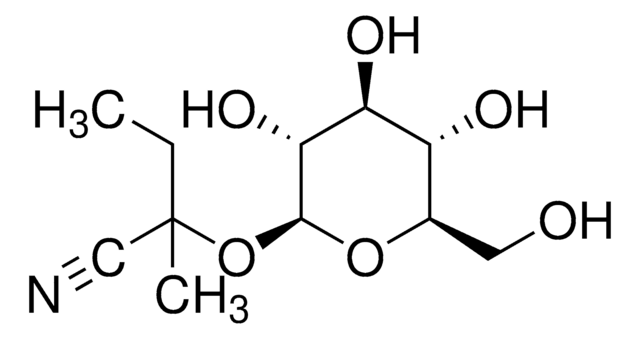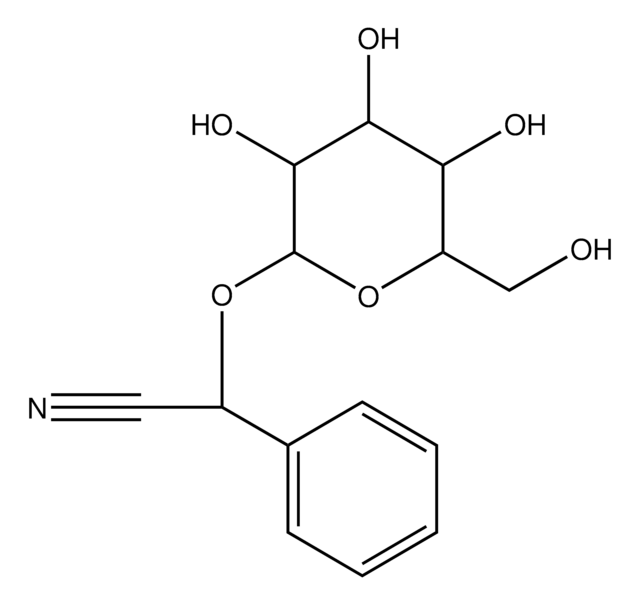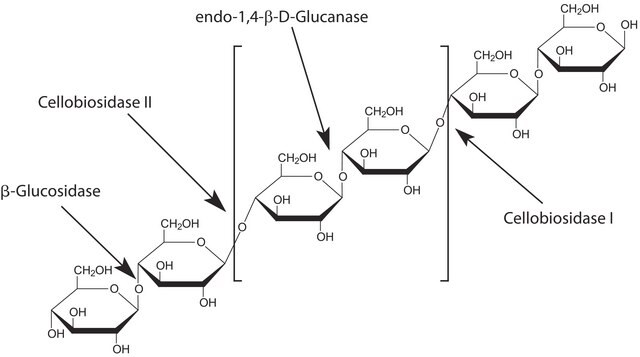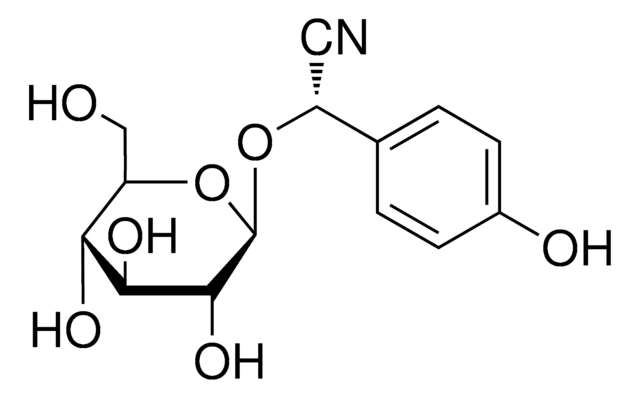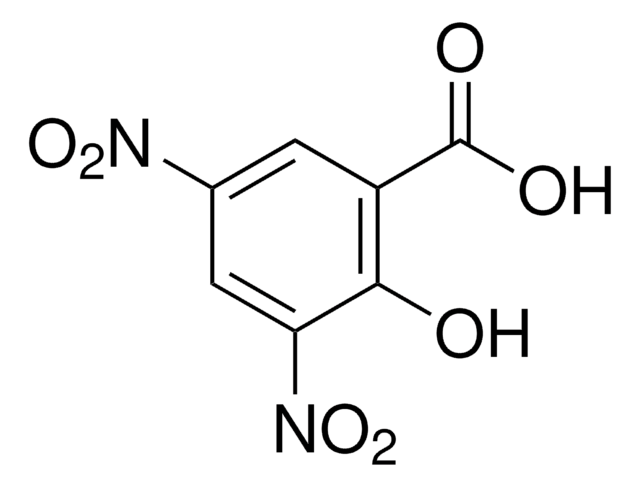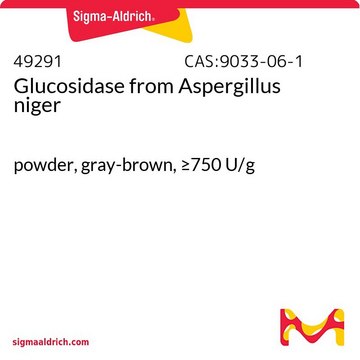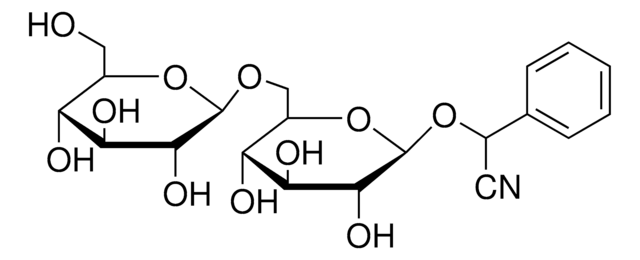68264
α-Hydroxyisobutyronitrile β-D-glucopyranoside
≥97% (HPLC)
동의어(들):
α-Hydroxyisobutyronitrile β-D-glucose, 2-(β-D-Glucopyranosyloxy)-2-methylpropionitrile, Linamarin
로그인조직 및 계약 가격 보기
모든 사진(1)
About This Item
실험식(Hill 표기법):
C10H17NO6
CAS Number:
Molecular Weight:
247.25
MDL number:
UNSPSC 코드:
12352201
PubChem Substance ID:
NACRES:
NA.25
추천 제품
생물학적 소스
synthetic
Quality Level
분석
≥97% (HPLC)
양식
solid
광학 활성
[α]/D -26.5±2.0°, c = 1 in H2O
기술
HPLC: suitable
색상
white to off-white
저장 온도
2-8°C
SMILES string
CC(C)(O[C@@H]1O[C@H](CO)[C@@H](O)[C@H](O)[C@H]1O)C#N
InChI
1S/C10H17NO6/c1-10(2,4-11)17-9-8(15)7(14)6(13)5(3-12)16-9/h5-9,12-15H,3H2,1-2H3/t5-,6-,7+,8-,9+/m1/s1
InChI key
QLTCHMYAEJEXBT-ZEBDFXRSSA-N
유사한 제품을 찾으십니까? 방문 제품 비교 안내
애플리케이션
Linamarin, a cyanogenic glucose substrate, is used together with β-glucosidase, linamarase, to produce cyanide in vivo as a potential anticancer strategy.
생화학적/생리학적 작용
Linamarin is a cyanogenic glucoside found in the leaves and roots of plants such as cassava, lima beans, and flax. Upon exposure to enzymes and gut flora in the human intestine, linamarin and its methylated relative lotaustralin can decompose to the toxic chemical hydrogen cyanide
포장
Bottomless glass bottle. Contents are inside inserted fused cone.
기타 정보
To gain a comprehensive understanding of our extensive range of Monosaccharides for your research, we encourage you to visit our Carbohydrates Category page.
신호어
Warning
유해 및 위험 성명서
Hazard Classifications
Acute Tox. 4 Oral - Eye Irrit. 2 - Skin Irrit. 2 - STOT SE 3
표적 기관
Respiratory system
Storage Class Code
11 - Combustible Solids
WGK
WGK 3
Flash Point (°F)
Not applicable
Flash Point (°C)
Not applicable
개인 보호 장비
dust mask type N95 (US), Eyeshields, Gloves
Stefan Pentzold et al.
Scientific reports, 6, 22407-22407 (2016-03-05)
Insects often release noxious substances for their defence. Larvae of Zygaena filipendulae (Lepidoptera) secrete viscous and cyanogenic glucoside-containing droplets, whose effectiveness was associated with their physical and chemical properties. The droplets glued mandibles and legs of potential predators together and
Christine Männel-Croisé et al.
Analytical chemistry, 81(22), 9493-9498 (2009-10-22)
Corrin-based chemosensors allow the rapid and selective colorimetric detection of endogenous biological cyanide. The color change from orange to violet can be easily observed with the "naked eye" (Deltalambda(max) = 51 nm). The methodology works directly in the biological matrix
Eduardo Rivadeneyra-Domínguez et al.
Toxins, 12(11) (2020-11-14)
Cassava (Manihot esculenta Crantz) is a plant that contains neurotoxins such as linamarin and lotaustraline. Its long-term consumption is associated with neuronal damage and contributes to the development of motor impairment in humans and rats. We investigated the effects of
Lotte Kolind-Hansen et al.
Journal of the science of food and agriculture, 90(2), 252-256 (2010-04-01)
A number of retail shops in Copenhagen sell fresh cassava roots. Cassava roots contain the toxic cyanogenic glucoside linamarin. A survey was made of the shop characteristics, origin of the roots, buyers, shop owner's knowledge of toxicity levels, and actual
Hung Su et al.
Journal of food and drug analysis, 27(2), 415-427 (2019-04-17)
The unintentional ingestion of toxic compounds in herbs is not uncommon in many parts of the world. To provide timely and life-saving care in the emergency department, it is essential to develop a point-of-care analytical method that can rapidly identify
자사의 과학자팀은 생명 과학, 재료 과학, 화학 합성, 크로마토그래피, 분석 및 기타 많은 영역을 포함한 모든 과학 분야에 경험이 있습니다..
고객지원팀으로 연락바랍니다.